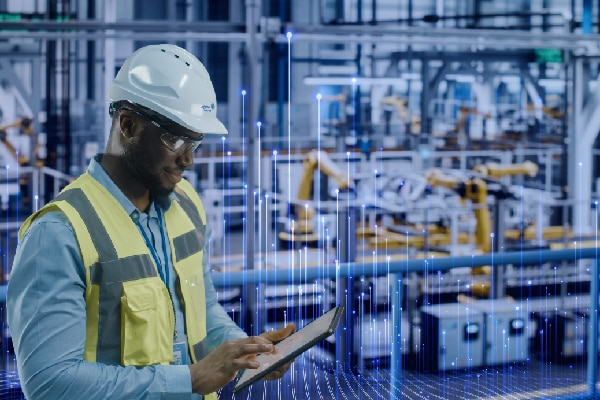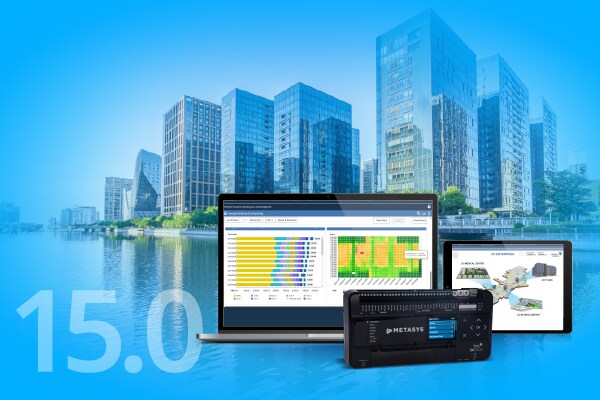- Johnson Controls
- Building Insights
- How AI is raising the stakes for data center load efficiency – are you ready?
How AI is raising the stakes for data center load efficiency – are you ready?
McKinsey projects AI-ready data center capacity will grow 33% annually through 2030. The International Energy Agency warns that data center electricity demand could more than double by decade's end. Recent EPRI research reveals an even more dramatic shift: rack density is jumping from 8-40kW to 130-600kW, with projections reaching 1.2MW per rack by 2028.

Graphics processing units (GPU) clusters are now consuming as much power as small cities, with some burning through 100 megawatt-hours just to train a single model. The AI boom is forcing data centers to face demands that traditional systems weren't designed to handle.
McKinsey projects AI-ready data center capacity will grow 33% annually through 2030. The International Energy Agency warns that data center electricity demand could more than double by decade's end. Recent EPRI research reveals an even more dramatic shift: rack density is jumping from 8-40kW to 130-600kW, with projections reaching 1.2MW per rack by 2028. As NVIDIA's Jensen Huang noted: "Your revenue is limited if your power is limited."
Understanding AI factories: Training vs. inference
Not all AI facilities are created equal. AI training data centers, true "AI factories for model creation", run continuous, power-intensive workloads that push thermal systems to their limits. These facilities create the large language models (LLMs) that power AI applications.
AI inference data centers serve a different purpose. These "AI factories for deployment" handle real-time user interactions – think of when you use Copilot or ChatGPT. They face unpredictable usage spikes while maintaining instant response times across global user bases.
The industry needs dynamic thermal management systems that adapt to variable AI loads in real time.
Geography also matters. Industry trends suggest uneven global distribution of inference facilities, with regions like Asia-Pacific potentially underserved compared to mature markets, leading to performance disparities for users. This imbalance is driving rapid global expansion, and as AI tokens become cheaper, industry experts predict an explosion of new applications requiring inference capacity closer to users. This demands adaptable facilities that can scale across diverse climates and conditions. The difference between cooler climates and warmer ones for data centers can be immense – colder countries can leverage natural cooling, while warmer nations may require massive cooling systems.
The real challenge: heat and variability
AI workloads don't just consume more power; they create entirely new operational challenges. Unlike traditional applications with predictable loads, AI generates sudden power spikes and intense heat bursts that can overwhelm conventional cooling systems. Modern AI chips run hotter and denser, creating intense thermal management challenges that push cooling systems to their limits.
This isn't about simply managing higher baseline consumption. It's about building systems that adapt in real time to workloads shifting from moderate to maximum intensity in milliseconds. Traditional cooling approaches designed for steady-state operations simply aren't equipped for this variability.
The sustainability stakes are equally high. McKinsey research suggests AI infrastructure growth could outpace decarbonization efforts, risking net zero targets. The IEA projects that by 2030, AI-optimized data centers could consume more electricity than the entire country of Japan does today.
The path forward: Adaptive infrastructure for AI
The industry needs dynamic thermal management systems that adapt to variable AI loads in real time. This means embedding intelligent controls, predictive analytics, and adaptive cooling technologies into every operational layer. Success requires solutions that work consistently across geographies while adapting to local conditions without compromising performance.
“The industry is very good at understanding how we remove heat at a low and medium-density scenario,” says Davin S. Sandhu, Global Portfolio Director for Data Center Solutions, Johnson Controls. “But as rack density keeps increasing, that's when you start having to discuss and have a conversation on whether you have the right thermal management solutions in place.”
“And that's when it becomes incredibly important to have a partner who understands these different thermal management challenges and system demands, so that you're not only successful today, but you're prepared for the future.”
Organizations need partners who understand both technical complexities and strategic imperatives. The AI revolution is raising stakes for everyone in the data center ecosystem, but it's also opening extraordinary possibilities for smarter, more sustainable and efficient infrastructure.
The companies that figure out these complexities with the right technical expertise and strategic partners are the ones who will come out ahead. The question isn't whether we're ready - it's whether we'll choose solutions that can adapt, scale, and deliver tomorrow's performance requirements.
Ready to future-proof your AI infrastructure? Partner with Johnson Controls to navigate AI-ready data center complexity to maintain efficiency and sustainability.

















.jpg?la=en&h=320&w=720&hash=244C75B74F0F77521D56164450973BCD)














.jpg?la=en&h=310&w=720&hash=8D9823F26AA80B2B75C3E4B2E61770DC)


.jpg?la=en&h=320&w=719&hash=13CA7E4AA3E453809B6726B561F2F4DD)
.jpg?la=en&h=306&w=720&hash=F21A7CD3C49EFBF4D41F00691D09AEAC)

.png?la=en&h=320&w=720&hash=18CFCCD916C92D922F600511FABD775D)














